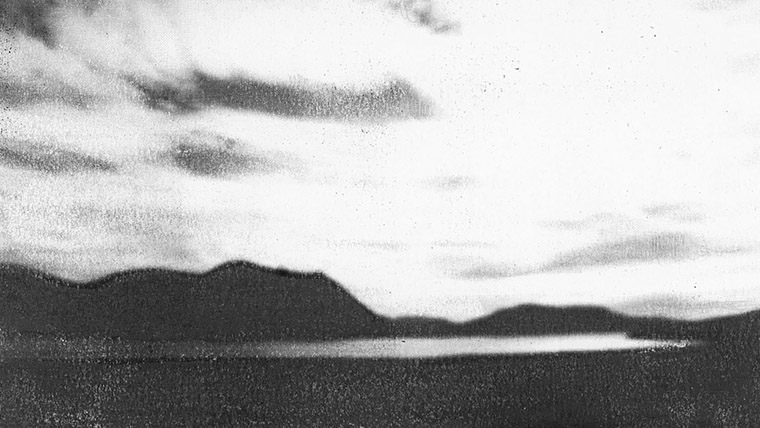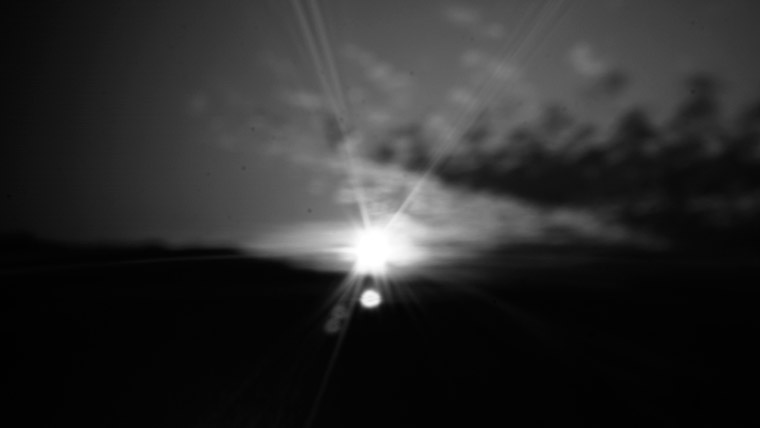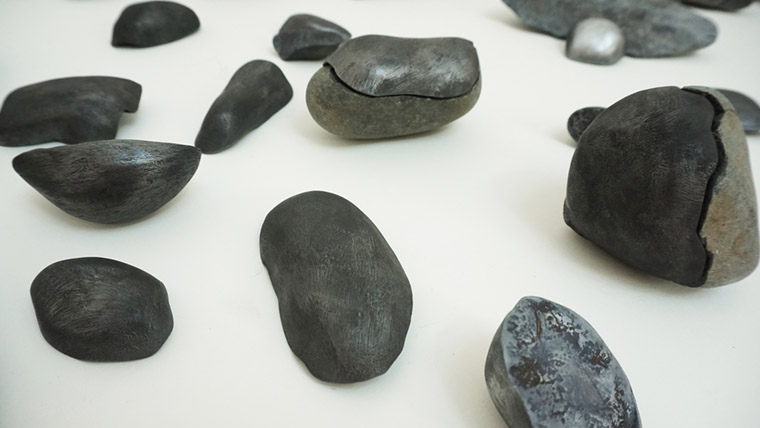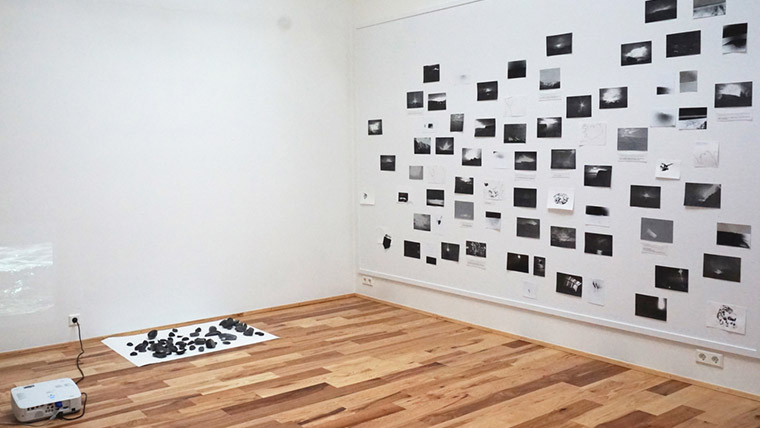Baer Art Center, Höfdaströnd, Hofsos, Iceland. June - July 2015.
An island as the geological structure is fascinating for me. Surrounded by the water it is like a mini – world within a world. The island must cope with difficulties by itself , it has to be self-sufficient somehow. Inhabitants grow up in a different psychological conditions then the inhabitants of the continent. The first travel guide to Iceland in Polish, written by a Czech explorer Daniel Vetter, was published in 1638. Reading the book, composed of 15 thematic chapters, it is difficult not to notice, that during the Vetter's time, the trip to Island was not only dangerous but also was connected with discovering the new. Describing habits, food, nature, Vetter paid attention mostly to differences. Similarities were not interresting for him. In this sense Vetter is more like a contemporary traveler, who, going through a new land, is looking for the Other. But is there any possibility, in a global world, to find the Other?
I formulate the hypothesis that nature has not change so much since Vetter's time and is still surprising, but people's way of living has changed a lot and now it is not as controversial, for the traveler from Europe, as 400 years ago. Following the path of similarities and differences I collected material (photographs, movies, texts, stories, sketches, drawings), which will help me in creation of my own travel guide
. I arrived to Iceland by boat, because I didn't want to make a process of traveling easier.
Baer Art Center, Höfdaströnd, Hofsos, Islandia. Czerwiec - lipiec 2015.
Wyspa jako twór geologiczny jest fascynująca, otoczona zewsząd wodą stanowi mini świat w świecie. Wyspa musi sobie radzić, być poniekąd samowystarczalna, a jej mieszkańcy wzrastają w innych warunkach psychologicznych niż mieszkańcy lądu.
W 1638 roku powstał pierwszy wydany po polsku przewodnik po Islandii napisany przez czeskiego podróżnika Daniela Vettera. Czytając książkę, na którą składa się 15 tematycznych rozdziałów, trudno nie zauważyć, że w czasach Vettera podróż na Islandię była nie tylko niebezpieczna, ale też wiązała się z odkrywaniem nowości. Opisując zwyczaje, jedzenie, przyrodę Vetter skupia się przede wszystkim na różnicach, to co podobne nie budzi jego zainteresowania. W tym sensie nie różni się od współczesnego podróżnika, który przemierza nowe lądy poszukując Innego. Czy jednak gdzieś jeszcze w zglobalizowanym świecie ukrywa się inny"
?
Stawiam hipotezę, że od czasów Vettera przyroda na Islandii nie zmieniła się radykalnie i nadal zaskakuje swoją innością, natomiast sposób życia ludzi nie budzi już takich kontrowersji jak 400 lat temu. Podążając zatem tropem różnic i podobieństw zebrałam materiał (fotografie, filmy, teksty, historie, szkice, rysunki), który posłuży mi do stworzenia osobistego dziennika podróży. Na wyspę przypłynęłam promem, aby nie upraszczać procesu podróżowania.




